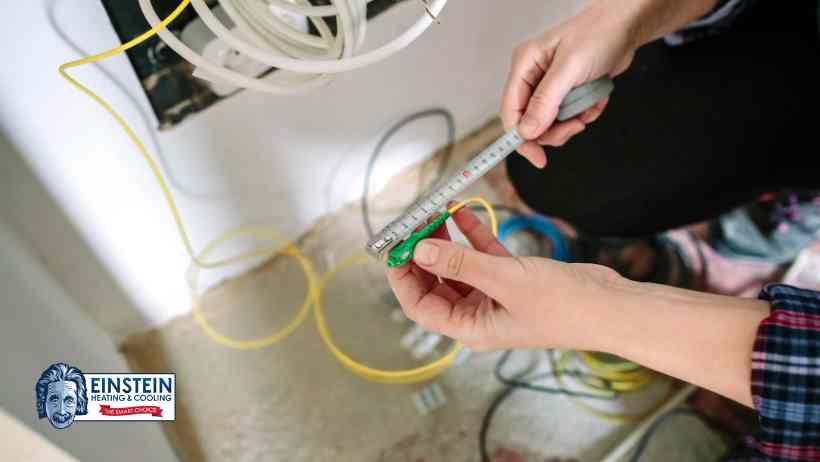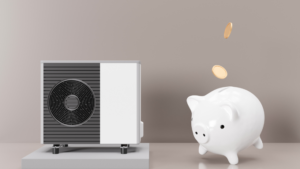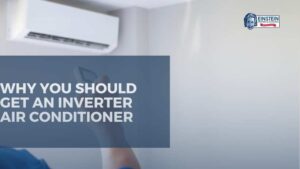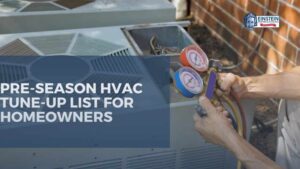Tankless water heaters have become a popular choice for residential use due to their energy efficiency and continuous hot water supply. However, choosing the right size of a tankless water heater is crucial to ensure it meets your household’s hot water demands efficiently. In this blog post, we will explore the key factors you need to consider when selecting a tankless water heater for your Bend home.
Understanding Tankless Water Heaters
Tankless water heaters, also known as on-demand water heaters, heat water directly as it flows through the unit. This means that there is no need for a storage tank, making them a more energy-efficient and space-saving option. The size of a tankless water heater is primarily determined by its GPM rating, which measures the gallons of hot water it can produce per minute.
Factors to Consider When Choosing a Tankless Water Heater
When selecting a tankless water heater for residential use, there are several factors that play a significant role in determining the right size for your specific needs. Here are the key factors to consider:
1. Flow Rate (GPM)
The flow rate of a tankless water heater, measured in Gallons Per Minute (GPM), indicates how much hot water the unit can provide at a given time. To determine the appropriate flow rate for your household, consider the following sub-factors:
- Number of Fixtures: Calculate the total GPM requirements for all fixtures in your home, including showers, faucets, and appliances. Add these values together to estimate the peak demand.
- Simultaneous Usage: Assess how many fixtures may be used simultaneously. This will help you understand the highest hot water demand your system will encounter.
- Temperature Rise: Determine the desired temperature increase over the incoming water temperature. A higher temperature rise will require a more powerful tankless water heater.
Steps to Calculate the GPM requirements
To calculate the total GPM requirements, we’ll walk you through the steps needed:
- Step 1: Create a Fixture Inventory by creating an inventory of all the fixtures in your home that require hot water. This should include showers, sinks, dishwashers, washing machines, and any other appliances or fixtures that use hot water.
- Step 2: Determine Flow Rates (in GPM) for each fixture. Manufacturers often provide this information in the product specifications or on the fixture itself. If not, you can use a flow rate measuring device to measure the flow rate accurately. Here are some typical flow rates for common fixtures:
- Showerhead: 2.5 GPM
- Kitchen Sink: 1.5 GPM
- Bathroom Sink: 1.2 GPM
- Dishwasher: 1.5-2.5 GPM
- Washing Machine: 2.0-2.5 GPM
- Step 3: Think about the possibility of multiple fixtures being used simultaneously. For instance, if someone is taking a shower while another person is using the kitchen sink, you’ll need to account for the combined GPM. Make a list of fixtures that are likely to be used simultaneously and add their flow rates together.
- Step 4: To calculate the total GPM requirements, simply add up the flow rates of all the fixtures that could potentially be used simultaneously. For example, if your shower has a flow rate of 2.5 GPM and your kitchen sink has a flow rate of 1.5 GPM, and they are often used together, your total GPM requirement would be 4.0 GPM.
- Step 5: It’s a good practice to add a safety margin to your total GPM requirements to ensure your tankless water heater can handle peak demand. A 20-30% margin is typically recommended. Using the previous example, with a total GPM requirement of 4.0 GPM, a 30% safety margin would bring the recommended tankless water heater capacity to 5.2 GPM.
- Step 6: Now that you have your total GPM requirements with a safety margin, you can look for a tankless water heater that can provide that flow rate. Tankless water heaters are typically rated by their maximum GPM output. Ensure the selected unit meets or exceeds your calculated total GPM requirement.
It’s important to recognize that the GPM rating represents the maximum hot water flow that the unit can provide. The actual GPM you experience may vary based on factors like the incoming water temperature and the unit’s heating capacity. In colder climates, where the groundwater temperature is lower, you may need a larger unit to achieve the desired hot water flow.
2 Sizing Chart and Manufacture Guidelines
Manufacturers often provide sizing charts or guidelines to help you choose the right tankless water heater for your home. Let’s delve deeper into the different sizes and GPM ratings of tankless water heaters:
Different Sizes and GPM ratings
- Small Tankless Water Heaters (Under 5 GPM):
- Small tankless water heaters are designed for single-point-of-use applications. These units typically have a GPM rating of under 5. They are ideal for providing hot water to a specific fixture, such as a bathroom sink, a small kitchen faucet, or a washing machine. If you live in a studio apartment or have a small cabin, a small tankless water heater may suffice for your basic hot water needs. However, it’s essential to note that they may not handle multiple fixtures running simultaneously.
- Medium Tankless Water Heaters (5-7 GPM):
- Medium-sized tankless water heaters offer a balance between size and performance. With GPM ratings ranging from 5 to 7, these units are suitable for homes with moderate hot water demands. They can comfortably handle the simultaneous use of two or more fixtures. For instance, you can run a shower and a dishwasher concurrently without experiencing a drop in water temperature. Medium-sized tankless water heaters are a popular choice for small to mid-sized households.
- Large Tankless Water Heaters (Over 7 GPM):
- Large tankless water heaters are designed for households with high hot water demands. These units have a GPM rating that exceeds 7 and can provide hot water for multiple fixtures running simultaneously. You can expect a consistent supply of hot water for showers, laundry, dishwashing, and more. If you have a larger family or a home with several bathrooms, a large tankless water heater is likely the most suitable choice.
Sizing Charts
Sizing charts provided by manufacturers offer an organized way to determine the ideal tankless water heater capacity for your home. These charts typically take into account the size of your residence and the number of family members. Let’s delve into how these charts work:
- Residence Size: Manufacturers often categorize their tankless water heaters based on the size of the residence. For instance, they might have different models labeled for small apartments, single-family homes, or large estates.
- Flow Rate: The sizing chart will usually display the flow rate of each tankless water heater model. This is the amount of hot water the unit can deliver per minute. Consider your household’s peak demand and compare it to the flow rates listed in the chart.
- Number of Bathrooms: Some sizing charts provide recommendations based on the number of bathrooms in your home. This is a practical way to estimate your hot water needs since bathrooms are significant sources of hot water consumption.
- Simultaneous Usage: The chart may also offer suggestions for simultaneous fixture usage. For instance, it might indicate how many showers and faucets you can run at the same time with a specific unit.
- Temperature Rise: Manufacturers often consider the desired temperature rise when providing sizing recommendations. They may specify the temperature increase the unit can achieve in real-world scenarios.
Manufacturer Guidelines
In addition to sizing charts, manufacturers offer guidelines to help you choose the right tankless water heater based on the size of your residence and the number of family members. These guidelines are often straightforward and user-friendly. Here’s how they typically work:
- Number of Family Members: Manufacturers may suggest different models based on the number of people living in your home. They understand that larger households will have higher hot water demands.
- Flow Rate Requirements: Guidelines usually provide information about the flow rate required for various family sizes. This gives you a clear idea of the minimum flow rate you should be looking for in a tankless water heater.
- Bathroom Count: Similar to sizing charts, some manufacturers emphasize the number of bathrooms in your residence as a key factor in sizing recommendations. They recognize that multiple bathrooms mean higher hot water needs.
- Temperature Rise Consideration: Manufacturer guidelines often factor in the desired temperature rise, which may vary depending on your geographic location and climate. This ensures that the tankless water heater can provide hot water at the temperature you prefer.
- Recommending Models: Based on the above factors, manufacturers typically recommend specific models or series that match your household’s requirements. This simplifies the decision-making process by narrowing down your choices.
- Product Comparisons: Manufacturers may provide a side-by-side comparison of their different tankless water heater models. This allows you to compare flow rates, energy efficiency, and other features to make an informed choice.
While GPM is a significant factor, remember that the size of a tankless water heater also impacts its physical dimensions and installation requirements. Before purchasing a unit, measure the available space where it will be installed and ensure it meets the manufacturer’s installation guidelines.
3. Climate and Incoming Water Temperature
The climate in your region and the temperature of the incoming water affect the performance of your tankless water heater. Here’s what to consider:
- Incoming Water Temperature: The colder the incoming water, the harder the tankless water heater has to work to reach the desired hot water temperature. You may need a larger unit in colder climates.
- Climate Zone: Different regions have varying average incoming water temperatures. If you live in a colder climate, you’ll likely require a more powerful tankless water heater.
4. Peak Demand and Usage Patterns
Understanding your household’s peak hot water demand and usage patterns is crucial for selecting the right tankless water heater. Consider the following aspects:
- Peak Demand Times: Identify when your household experiences peak hot water demand. Is it in the morning, evening, or during specific activities like showers or laundry?
- Usage Patterns: Analyze your family’s habits, such as the number and duration of showers and appliance usage. This data helps determine the unit’s size needed to meet your hot water requirements.
5. Energy Source (Electric or Gas)
Tankless water heaters are available in both electric and gas models, each with its pros and cons. The choice of energy source impacts the unit’s size and efficiency. Consider the following factors:
- Tankless Electric Heater: Electric tankless water heaters are easier to install and have lower upfront costs. However, they may have limitations in meeting high-demand hot water needs.
- Tankless Gas Heater: Gas tankless water heaters are known for their high flow rates and ability to handle larger hot water demands. They are suitable for households with multiple fixtures and simultaneous hot water needs.
6. Size and Space Availability
The physical size and space availability for your tankless water heater is a practical consideration. Ensure that you can accommodate the unit in your preferred location:
- Installation Space: Measure the available space for the tankless water heater. Consider both indoor and outdoor installation options, and choose a unit that fits comfortably.
- Ventilation Requirements: Gas tankless water heaters require proper ventilation, so ensure there’s a suitable space for venting, which may influence your choice.
7. Maintenance and Longevity
The maintenance and longevity of your tankless water heater are essential factors to consider, as they impact the unit’s overall cost-effectiveness:
- Maintenance: Check the manufacturer’s maintenance recommendations. Electric units typically require less maintenance than gas units.
- Lifespan: Tankless water heaters have varying lifespans. Invest in a high-quality unit with a longer warranty for extended service life.
8. Energy Efficiency and Energy Factor
Energy efficiency is a critical consideration when choosing a tankless water heater. It affects your utility bills and the environmental impact of your water heating system:
- Energy Factor (EF): The EF rating quantifies a unit’s efficiency in converting energy into hot water. Higher EF values indicate better efficiency and lower operating costs.
- Energy Savings: Consider the long-term energy savings by choosing a tankless water heater with a high EF rating. While initial costs may be higher, efficient models can save you money over time.
9. Budget and Initial Costs
Your budget and the initial cost of the tankless water heater are significant factors in the decision-making process. Keep the following in mind:
- Upfront Cost: Tankless water heaters, especially gas models, can have a higher upfront cost than traditional tank-type water heaters. Determine your budget and choose a unit that suits your financial capabilities. Make sure that you weigh all the pros and cons of tankless water heaters before installing one.
- Operating Cost: Although the initial investment may be higher, consider the long-term operating cost savings, which can outweigh the upfront expenses.

10. Warranty and Support
The warranty and support provided by the manufacturer are essential for peace of mind and protection against unexpected issues:
- Warranty Length: Choose a tankless water heater with a substantial warranty period. This demonstrates the manufacturer’s confidence in their product’s quality.
- Customer Support: Research the manufacturer’s reputation for customer support, as this will be valuable if you encounter any technical problems during use.
11. Technology and Features
Modern tankless water heaters often come with advanced technology and features that enhance their performance and convenience. Evaluate the following:
- Digital Controls: Units with digital controls offer precise temperature settings and ease of use.
- Modulation: Modulating units adjust the heating output to match the hot water demand, ensuring energy efficiency.
- Anti-Scale Systems: Some tankless water heaters feature anti-scale systems to reduce maintenance and prolong the unit’s lifespan.
- Remote Control and Monitoring: Consider models that offer remote control and monitoring through mobile apps for added convenience.
12. Professional Sizing and Installation
It’s highly recommended to consult with a professional plumber or HVAC technician for the sizing and installation of your tankless water heater:
- Professional Assessment: A professional can accurately assess your household’s hot water needs, taking into account all factors, and recommend the right size and model.
- Correct Installation: Proper water heater installation is crucial for the unit’s performance and safety. Hiring a qualified technician ensures compliance with local codes and regulations.
13. Environmental Impact
Consider the environmental impact of your tankless water heater, especially if you are concerned about reducing your carbon footprint:
- Energy Source: Electric tankless water heaters are generally considered more environmentally friendly due to their lower emissions compared to gas models.
- Energy Efficiency: Higher-efficiency units reduce energy consumption and greenhouse gas emissions, contributing to a more sustainable home.
14. Future Growth and Needs
Think about your future hot water needs and potential changes in your household:
- Family Size: If your family is expected to grow, it’s wise to choose a tankless water heater with some room for expansion.
- Home Additions: Consider any planned home additions or renovations that may increase your hot water demand.
15. Brand Reputation and Reviews
Before making a final decision, research the brand’s reputation and read user reviews to gain insight into the performance and reliability of the tankless water heater:
- Brand Reputation: Opt for well-established and reputable brands with a history of quality and customer satisfaction.
- User Reviews: Read user reviews to understand the real-world experiences of homeowners who have installed the same unit.
Conclusion
Selecting the right size of a tankless water heater for residential use involves a careful assessment of your household’s hot water needs and consideration of various factors. By examining factors such as flow rate, climate, energy source, space availability, and more, you can make an informed decision that ensures a continuous and efficient supply of hot water for your home.
Always consult with professionals from Einstein Heating and Cooling for sizing and installation to guarantee the best performance and longevity of your tankless water heater. Moreover, pay attention to energy efficiency, warranties, and reviews to make a wise and cost-effective choice. Ultimately, choosing the right tankless water heater will provide you with the comfort of hot water while optimizing energy savings for years to come.








